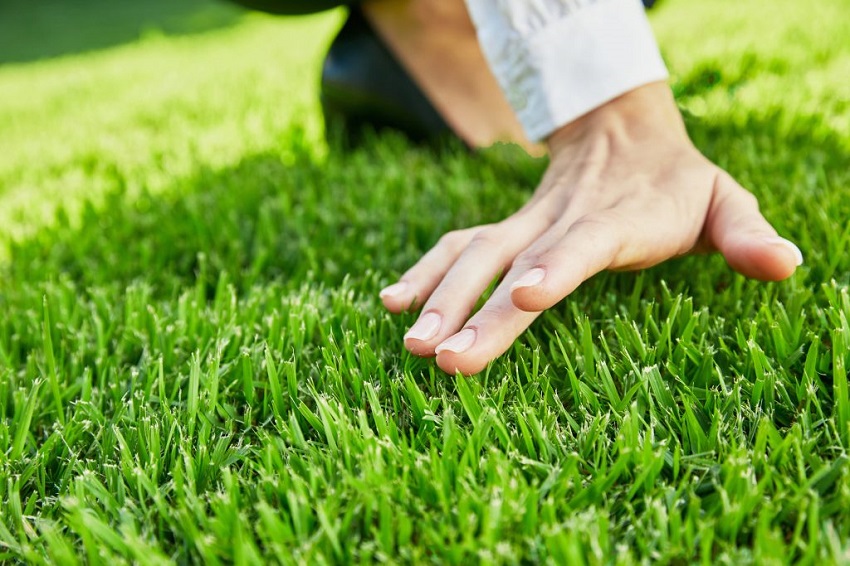
Florida is known for its warm climate and lush vegetation, making it a haven for various types of grass. In this article, we will explore the common types of grass found in Florida, their characteristics, and factors to consider when choosing the right grass for your lawn.
Understanding Florida’s Climate
Before we delve into the types of florida grass, it’s essential to understand the unique climate of the state. Florida experiences hot and humid summers, mild winters, and regular rainfall throughout the year. These climatic factors significantly impact the type of grass that thrives in the region.
St. Augustine Grass: A Florida Favorite
One of the most common grass types found in Florida is St. Augustine grass (Stenotaphrum secundatum). This warm-season grass is widely popular due to its ability to tolerate shade, saltwater exposure, and sandy soil. St. Augustine grass has broad, flat blades that create a thick, lush carpet-like appearance.
St. Augustine grass is characterized by its vibrant green color and its ability to maintain its color even during the winter months. It also has a high tolerance for foot traffic and recovers quickly from damage, making it suitable for many lawns and residential landscapes in Florida.
Bermuda Grass: Thriving in the Sunshine State
Another popular grass type in Florida is Bermuda grass (Cynodon dactylon). This warm-season grass is known for its excellent heat and drought tolerance, making it ideal for the hot and dry summers in the Sunshine State. Bermuda grass has fine-textured blades that form a dense and durable turf.
One of the key advantages of Bermuda grass is its fast growth and ability to recover quickly from wear and tear. It is a favorite choice for sports fields, golf courses, and high-traffic areas. However, Bermuda grass requires regular mowing and may become invasive if not properly maintained.
Zoysia Grass: Finding Its Place in Florida
While St. Augustine grass and Bermuda grass dominate the Florida landscape, Zoysia grass (Zoysia spp.) is gaining popularity for its unique characteristics. Zoysia grass is a warm-season grass that combines the best features of St. Augustine and Bermuda grass.
Zoysia grass thrives in both sun and shade, making it a versatile option for Florida lawns. It has a medium to fine texture and forms a dense, carpet-like turf. Zoysia grass exhibits excellent drought tolerance, weed resistance, and durability, which can withstand heavy foot traffic. However, it requires proper care and maintenance to ensure its optimal growth and appearance.
Factors to Consider When Choosing Grass
When selecting the right type of grass for your lawn in Florida, several factors should be considered:
- Climate: Consider the specific climate conditions in your region, such as temperature, rainfall, and humidity levels. Choose a grass type that can withstand Florida’s unique climate.
- Sunlight Exposure: Determine the amount of sunlight your lawn receives throughout the day. Some grass types thrive in full sun, while others tolerate shade better.
- Soil Type: Understand the composition of your soil, whether it is sandy, clayey, or loamy. Different grass types have varying soil preferences.
- Water Requirements: Consider the water needs of the grass. Some types require more frequent watering, while others are more drought-tolerant.
- Maintenance: Evaluate the level of maintenance required for each grass type. Some grasses demand regular mowing, fertilization, and pest control, while others are more low-maintenance.
Conclusion
In conclusion, several grass types thrive in Florida’s warm and humid climate. St. Augustine grass, Bermuda grass, and Zoysia grass are among the most common choices for homeowners and landscapers. Each grass type has its unique characteristics, and the right choice depends on factors such as climate, sunlight exposure, soil type, water requirements, and maintenance preferences. By considering these factors, you can select the perfect grass for your Florida lawn and enjoy a vibrant and healthy outdoor space.
FAQs (Frequently Asked Questions)
- Can I grow cool-season grass in Florida?
Cool-season grasses are not well-suited for Florida’s warm and humid climate. It is best to choose warm-season grasses that can thrive in the state’s unique conditions.
- What is the best grass for a shaded area in Florida?
St. Augustine grass is known for its shade tolerance and performs well in partially shaded areas. However, it’s important to ensure that the shaded area still receives a sufficient amount of sunlight.
- How often should I mow my lawn with St. Augustine grass?
St. Augustine grass should be mowed at a height of 2.5 to 4 inches. It is generally recommended to mow the lawn once a week during the active growth season.
- Can I mix different grass types in my Florida lawn?
While it is possible to mix different grass types, it is generally not recommended. Different grasses have different growth rates, maintenance requirements, and appearances, which may result in an uneven and inconsistent lawn.
- How can I prevent weeds from invading my Florida lawn?
Regular mowing, proper fertilization, and adequate watering practices can help prevent weeds from taking over your lawn. Additionally, applying pre-emergent herbicides during the appropriate seasons can further aid in weed control.





